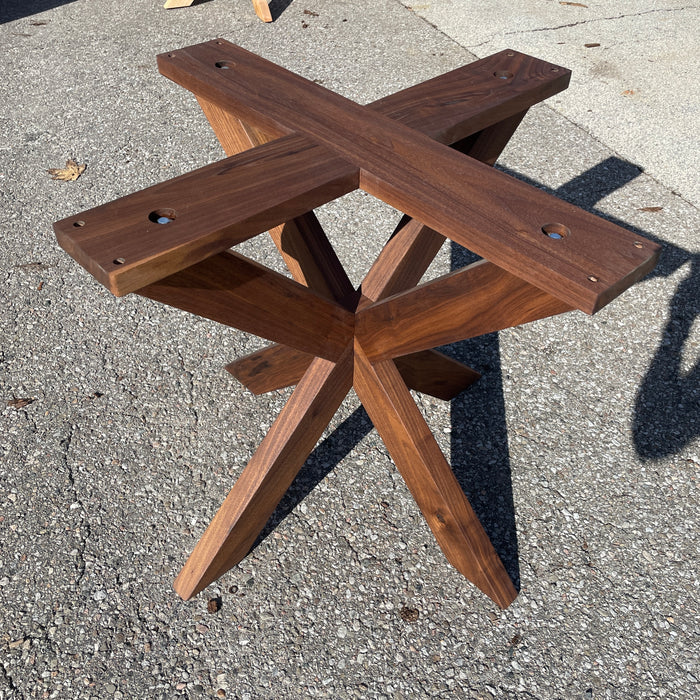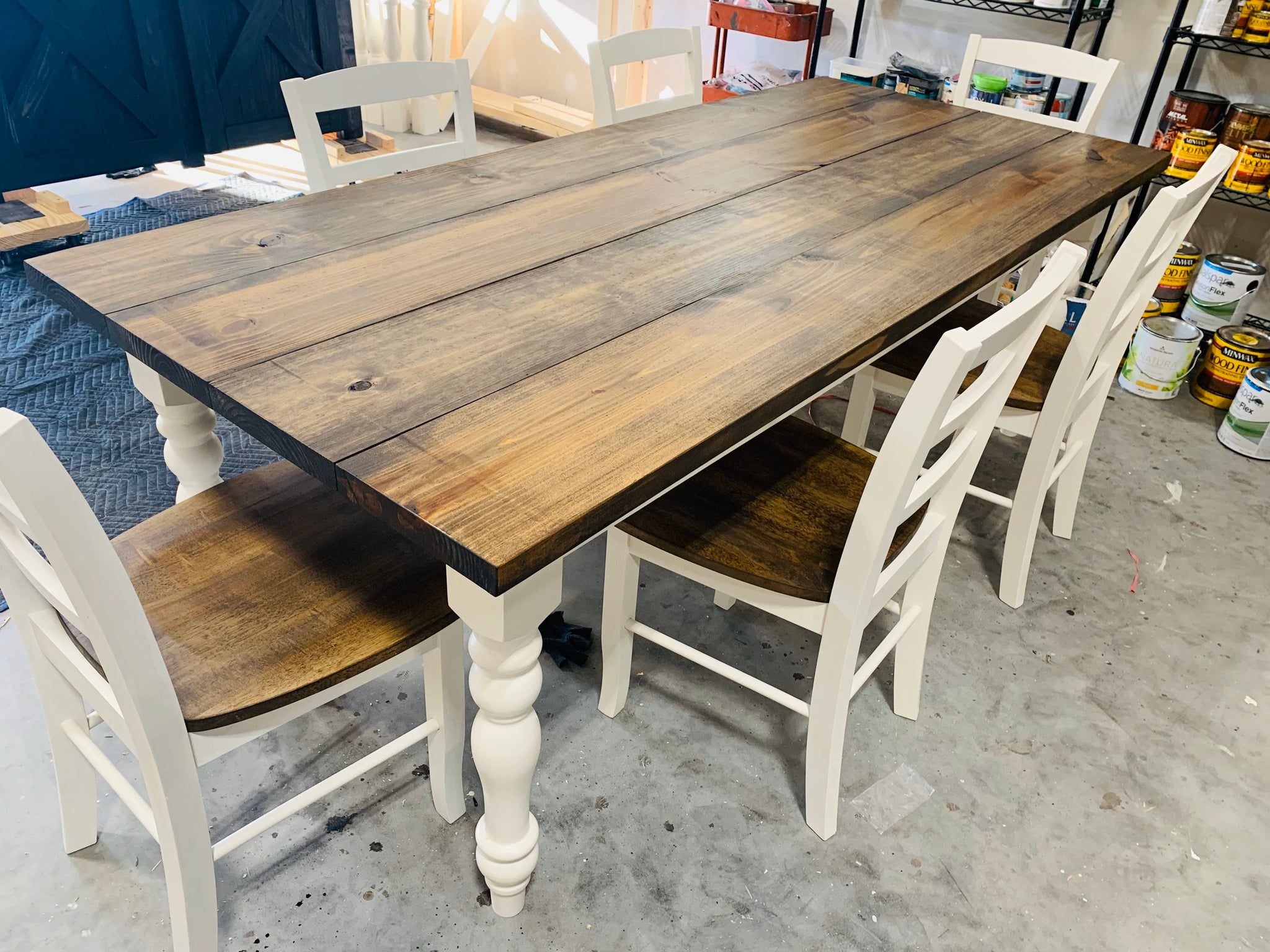Discover Affordable Style in High-Quality Dining Table Legs Wood
Discover Affordable Style in High-Quality Dining Table Legs Wood
Blog Article
Key Factors to Remember for Table Legs Wood Choices
When picking wood for dining table legs, a number of vital aspects necessitate cautious consideration to ensure both functionality and aesthetic allure. The choice of wood type, identified by its resilience and unique grain patterns, plays an essential role in the total design and long life of the item. Furthermore, one should consider upkeep needs and the ecological ramifications of sourcing materials. As these components link, they considerably influence the final outcome of your table. Comprehending the subtleties of each factor can be complicated, leading to essential choices that warrant more exploration.
Timber Types and Characteristics
When selecting timber for eating table legs, it is vital to recognize the unique characteristics of various wood kinds. Different woods supply distinct benefits and downsides, influencing both the toughness and visual allure of the completed product.
Hardwoods, such as cherry, oak, and maple, are generally preferred for their stamina and resistance to use. Oak, known for its remarkable longevity, additionally features a famous grain that can include personality to the table. Maple provides a smooth surface area and is less susceptible to bending, making it a dependable selection for practical furnishings. Cherry wood, with its abundant shade that grows gradually, provides a luxurious appearance yet might call for even more upkeep to stop scratches.
On the various other hand, softwoods like ache and fir are extra economical and easier to collaborate with, yet they are less long lasting than hardwoods. Pine is light-weight and includes a cozy, rustic look, making it a favored option for informal dining setups. Nonetheless, it is a lot more prone to scrapes and dents.
Recognizing these characteristics will certainly aid in making an educated decision to guarantee the legs of the dining table satisfy both useful and aesthetic requirements.
Grain Patterns and Visual Appeal
The timber's grain is not merely an aesthetic feature; it conveys an unique character and charm to each piece. Different timber varieties exhibit distinctive grain patterns, varying from the straight lines of maple to the intricate swirls of oak and the striking figure of walnut.
Furthermore, the orientation and range of the grain can influence the viewed dimension and sophistication of the table. Larger, more pronounced grains might offer a strong, dramatic effect, while finer, subtler grains can develop a refined, downplayed look. In addition, the completing procedure can better improve these patterns, emphasizing the natural beauty of the timber and drawing out abundant colors.
Inevitably, the selection of grain pattern ought to balance with various other design aspects, such as the table top and bordering furnishings, guaranteeing a natural aesthetic that elevates the eating experience. Thoughtful selection of timber grain not just contributes to the table's charm however also shows the owner's preference and design.
Resilience and Toughness
The resilience and toughness of dining table legs are extremely important considerations for ensuring longevity and stability in any eating room. Picking the appropriate wood is essential, as different species exhibit differing degrees of durability.

Inevitably, purchasing high-quality wood and robust construction methods will certainly produce a table that stands the examination of time, while providing a trustworthy structure for many meals he said shared among household and close friends. Focusing on resilience and stamina makes certain that your table continues to be functional and aesthetically pleasing for years to come.
Maintenance and Care
Appropriate upkeep and care are essential for preserving the longevity and stamina of dining table legs made from wood. Regular cleaning is important; making use of a soft, moist cloth guarantees that dust and debris do not accumulate, which can result in scrapes and monotony. It is recommended to stay clear of extreme chemicals or abrasive products that can damage the surface.
In addition, using an appropriate timber polish or wax regularly can aid maintain the luster and protect the timber from dampness and spills. It is critical to follow the supplier's referrals concerning the type of product to utilize, as specific coatings might react negatively to certain chemicals.
Humidity and temperature fluctuations can additionally affect wooden table legs, creating them to warp or fracture. It's best to put the table far from straight sunshine and warm sources. Dealing with these immediately can protect against more damage. if the table legs have any scratches or dents.
Lastly, regularly checking the joints and screws for tightness is important to maintain architectural stability (Dining Table Legs Wood). By sticking to these maintenance methods, house owners can ensure their wood table legs continue to be attractive and useful for many years ahead
Environmental Factors To Consider
When choosing timber for eating table legs, it's essential to take ecological factors to consider right into account. The sourcing and sustainability of timber are paramount in lessening eco-friendly impact. Choosing wood from certified resources, such as those backed by the Woodland Stewardship Council (FSC), ensures that the hardwood is gathered responsibly, promoting woodland conservation and biodiversity.

Furthermore, local sourcing of timber minimizes transportation exhausts, sustaining local economic situations while lessening environmental influence. It is likewise recommended to be familiar with the timber's therapy and completing processes, as certain chemicals can be damaging to both human wellness and the environment. By prioritizing sustainable wood selections, customers can add to ecological preservation while enjoying the longevity and elegance of their dining table legs.
Verdict
In conclusion, selecting wood for dining table legs demands mindful factor to consider of various aspects, consisting of wood kinds, grain patterns, and durability. Upkeep requirements and environmental sustainability further influence timber selections, emphasizing the relevance of sourcing from accredited or reclaimed materials.
When selecting timber for dining table legs, a number of vital elements necessitate careful consideration to Discover More guarantee both functionality and visual allure.Correct upkeep and care are important for preserving the toughness and stamina of eating table legs made from wood.When choosing timber for dining table legs, it's crucial to take environmental considerations into account. By focusing on lasting timber options, consumers can add to environmental conservation while taking pleasure in the longevity and beauty of their eating table legs.
In conclusion, selecting wood for dining table legs necessitates mindful consideration of various aspects, including timber types, grain patterns, and sturdiness. Dining Table Legs Wood.
Report this page